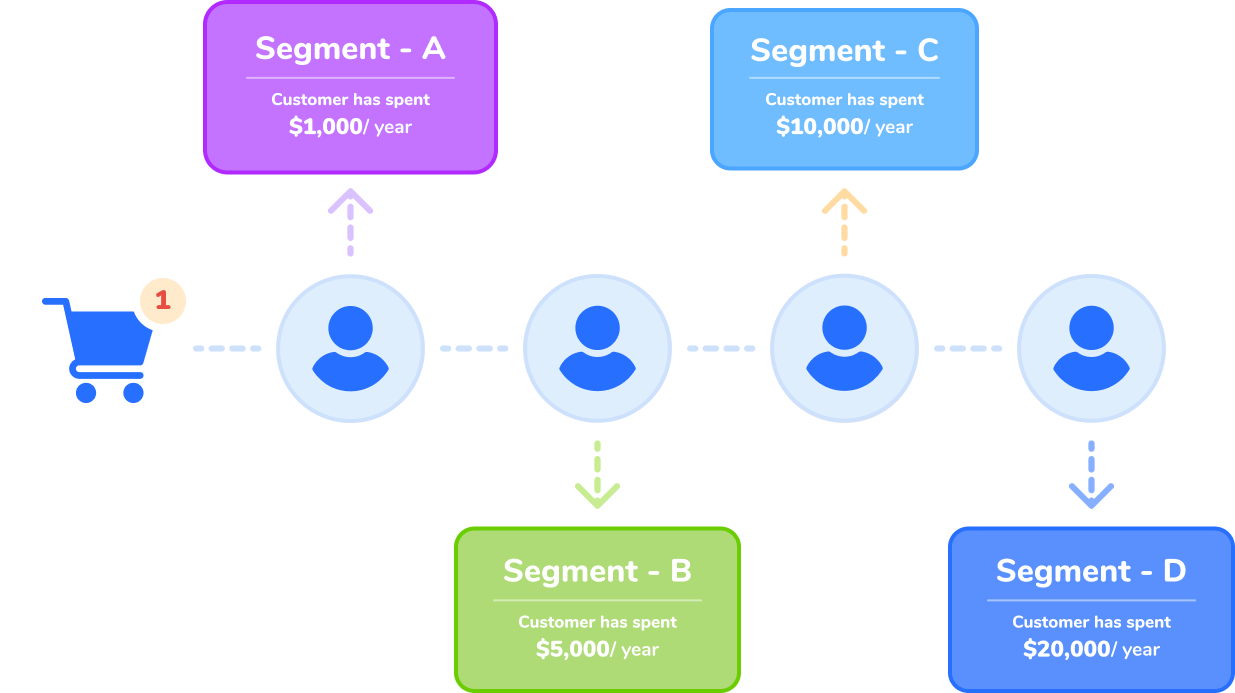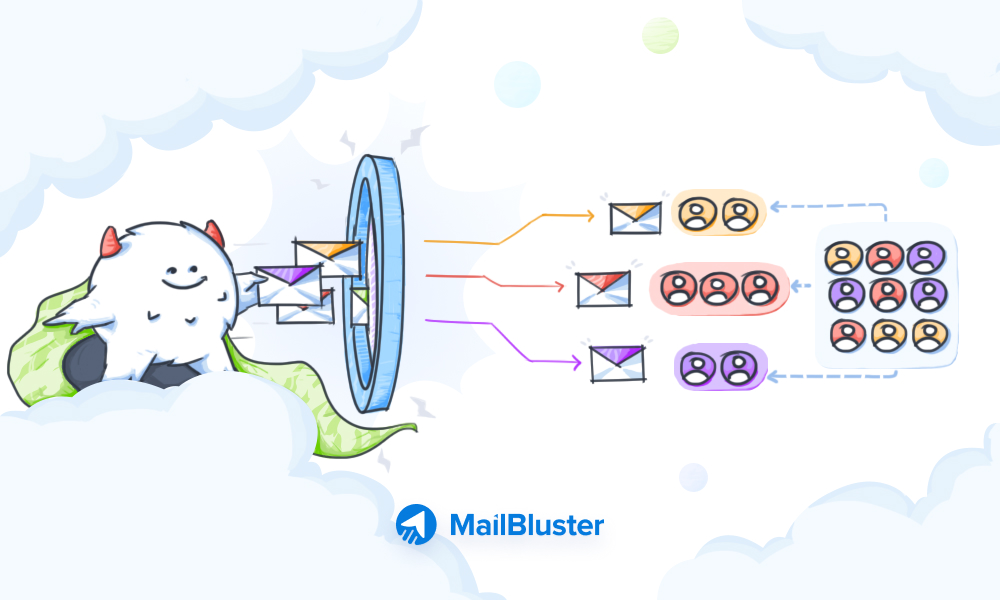If done correctly, email marketing is the simplest and fastest way to reach your customers nowadays. One of the essential features of email marketing platforms is Segmentation, which will help you be more efficient in your marketing and achieve your goals. Segmentation breaks down a large consumer or business market, usually made up of existing and potential customers, into smaller groups based on shared characteristics. In this article, you’ll learn almost everything there is to know about segments and how to use them in MailBluster.
Video tutorial on the segmentation tools available in MailBluster.
Table of contents
| Why should you use Segmentation? |
| How to effectively segment your mailing list? |
| Segments in MailBluster |
| Answers to some of the most frequently asked questions about segments in MailBluster |
Why should you use Segmentation?

Segmentation allows you to target your audience. Every customer is different, and you can reach the right people easily with Segmentation. It enables you to send more personalized emails and tailored content to your audience. Rather than sending the same email to everyone on your mailing list, create variations of that email to speak to different customer groups individually, and you’ll see improved campaign performance and stronger customer relationships.
Here are a few of the primary benefits of Segmentation:
- Higher open rates
If you personalize your email content to speak to customers more personally, your subject lines will naturally reflect that, making subscribers more likely to open the email. On average, Segmentation can increase the open rate of your emails by 15%.
- Increased click-through rates
When you get more people to open your segmented emails, you’ll notice that they’re clicking on the links inside them more. Because what they find inside becomes more attractive to them than what would be inside an email sent to everyone on your mailing list.
- Increased conversions
Increasing the number of people who visit your website will increase your chances of making a conversion. You’re effectively sending a highly qualified audience to your website using a segmented mailing list. Your audience will be warmed up when they arrive at your website if you know what they want and promote it in your email.
- Reduced the number of people who unsubscribe
Customers unsubscribe from mailing lists for various reasons, one of which is that the emails are irrelevant. If you provide relevant offers and content, subscribers are less likely to unsubscribe. Segmentation may be the key to lowering unsubscribe rates and keeping more people on your mailing list.
- Develop stronger customer relationships
Customers will trust your brand more if you provide them with content that is relevant to them. This will help you develop long-term relationships.
How to effectively segment your mailing list?
You can use various variables to segment your mailing list, including demographics, subscribers’ location data or interests, purchase history, and engagement with your company. Let’s examine each of these points in a precise manner.
- Demographics
You should broaden the knowledge of your subscribers to include their age, sex, occupation, and other relevant details if you want to set the right tone for your emails. For example, you can create two separate emails for men and women, and the response will be considerably more acceptable than only one email sent to both customers.
- Location
The regional Segmentation helps customize the lines of subjects and email pre-headers, making email more relevant. It is more likely that users will notice your email when it comes to their locations.
- Subscribers’ activity
Monitoring website behavior and email answers is yet another easy way to obtain more information about the interests of subscribers. For instance, the specific pages you visited can be used to send targeted emails. That’s not the only option; you can segment your leads based on-
- Opens and clicks of campaigns
- Browsed pages
- Purchase history
Segments in MailBluster
You can create segments in MailBluster, from your existing leads using some conditions or upload them as a CSV file prepared beforehand. Navigate to the left side of your MailBluster dashboard to find the Segments tool under the Leads. Three types of segments are available in MailBluster, each serving a specific purpose.
Standard Segment
You can use the standard segment whenever you need to create a segment based on conditions like campaign response or subscribers’ activities. So that you know, all you need to do is provide the right conditions and complete the segment.
A/B testing Segment
A/B testing segment will allow you to create small lists of leads. Slices are small lists. The A/B testing slices make small listings of all the leads you uploaded in MailBluster based on the slice number you provide.
Static Segment
Static segments are used to upload a previously prepared list of your leads as another segment. You can upload a CSV file as a fixed segment.
Answers to some of the most frequently asked questions about segments in MailBluster
How to upload separate lists of leads in MailBluster?
To upload separate lists of leads you need to convert your list to a CSV file and upload it as a static segment in MailBluster.
How do I send emails in small lists of leads?
You can divide your list into small lists with an equal number of subscribers and then send emails to a tiny list at a time. Go to MailBluster’s A/B testing segment section and enter the slice number to determine how many small segments will be created from your lead list.
How do I send emails to the leads that didn’t open my last campaign?
Using the standard segment of MailBluster, you can create a segment containing only the leads that didn’t open a specific campaign. Choose the right conditions and the campaign to create the segment and select this segment while sending the new campaign.
How do I create segments based on tags?
You can go to the standard segment section and put ‘Tags’ as the activity type. C oose the tag based on which you want to create the segment.
How to merge two segments?
Under the standard segment section, choose segments as the activity type and select the match as ‘Any of the selected segments.’ N w choose the segments you want to merge and create a new segment.
The most important thing about Segmentation and personalization of emails is constantly experimenting. Experiment with email marketing tools, ideas for segments, email flows in each segment, in-email customization, various offers, etc.
Do you have any questions about Segmentation? Reach out to us via email or give us a knock on the live chat at mailbluster.com.
Happy Sending!



 Contents
Contents